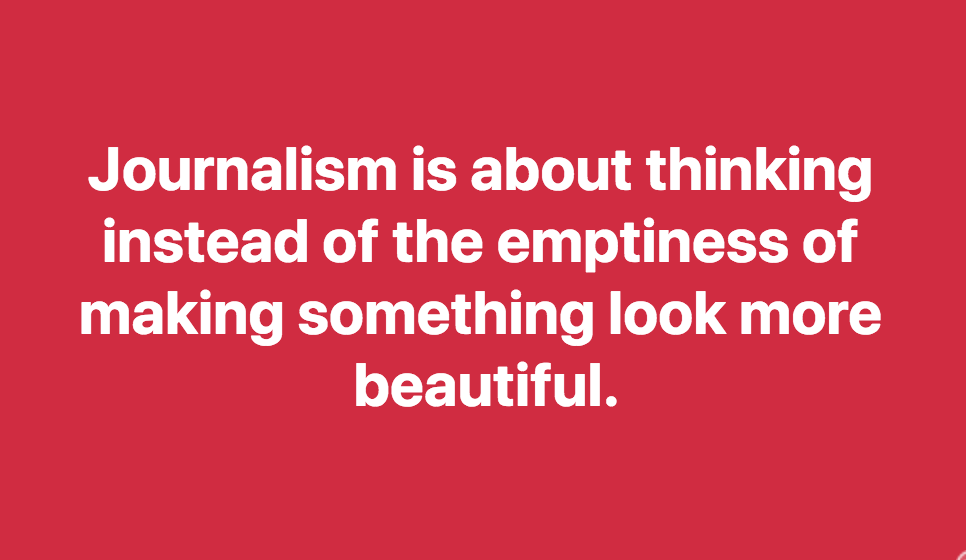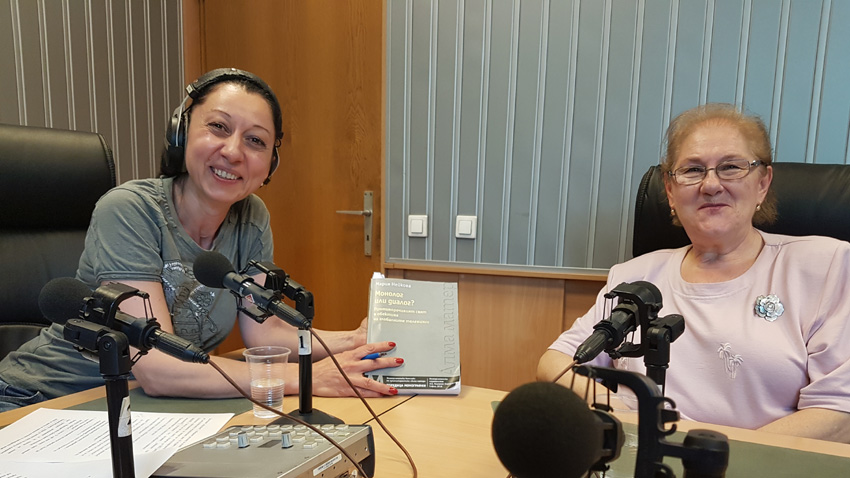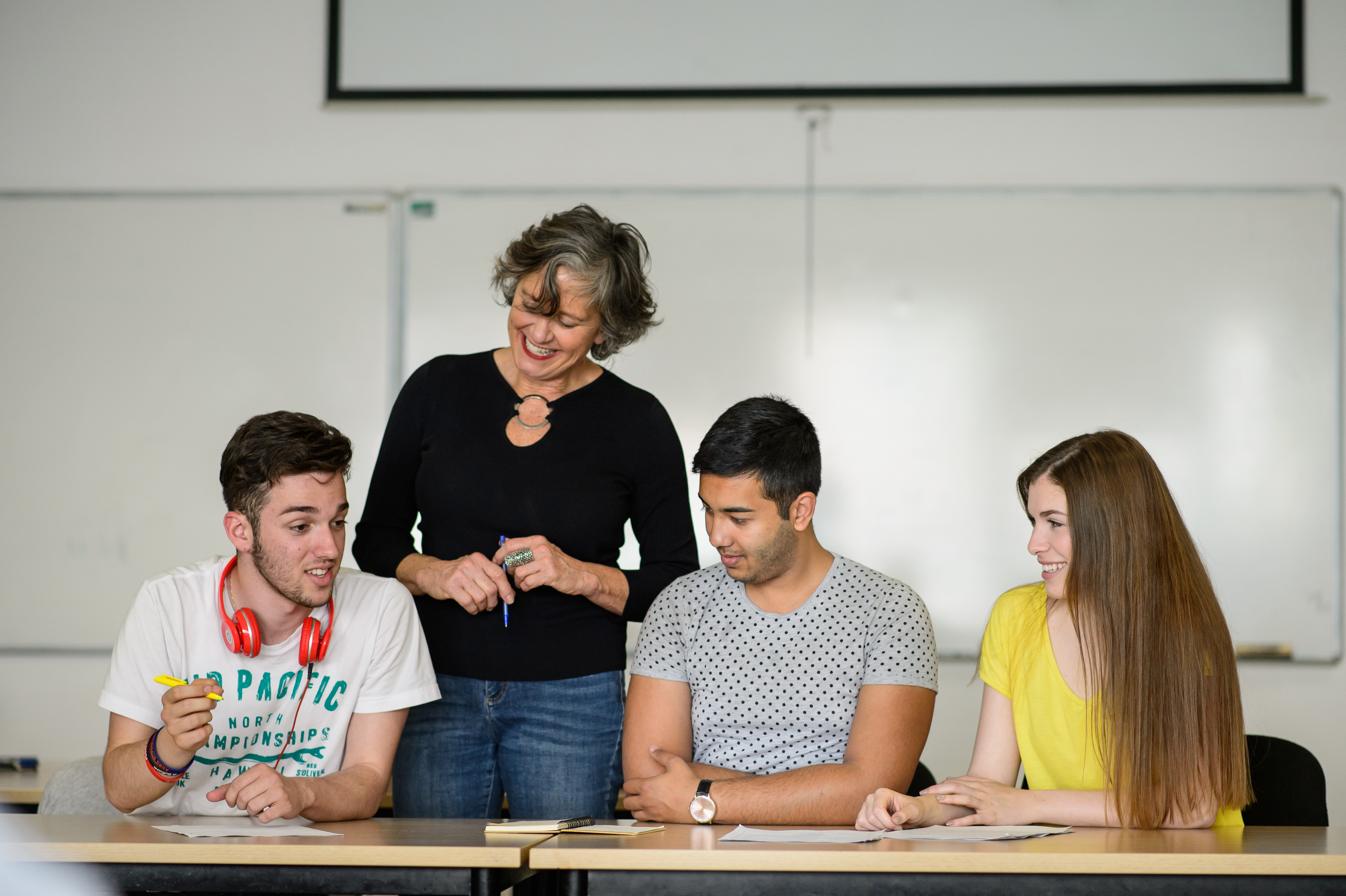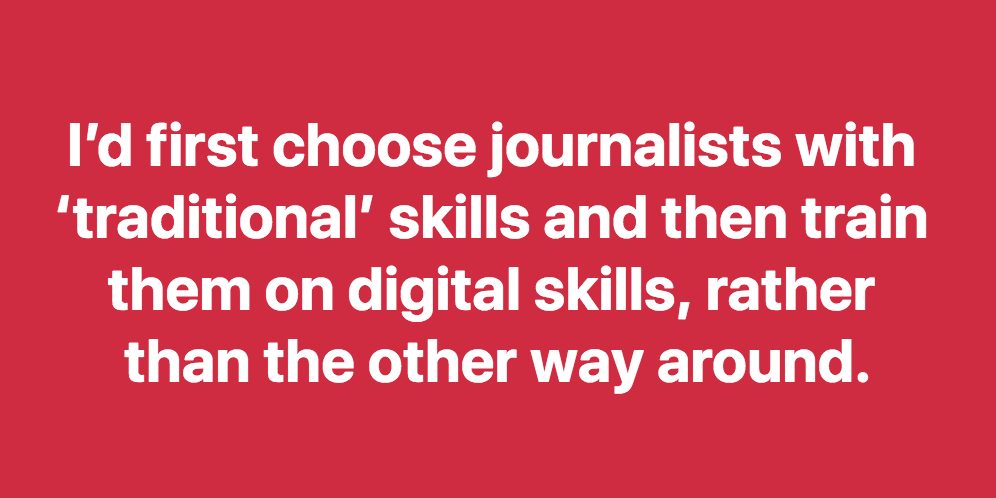 A 2018 article on MediaShift.org, a website offering “insight and analysis at the intersection of media and technology,” touted the importance of making technology more central to journalism education. While some of the advice it dispensed made sense (teach online research skills, incorporate video and audio in teaching), the article did not stop there: it suggested that journalists today should be able to code and build media apps, and that no self-respecting journalism course can do without a Twitter or LinkedIn presence or a class session on GIF making. These conclusions raised a few questions: What makes a journalist? Can anyone do it? How should journalism teaching adapt to prepare tomorrow’s professionals?
A 2018 article on MediaShift.org, a website offering “insight and analysis at the intersection of media and technology,” touted the importance of making technology more central to journalism education. While some of the advice it dispensed made sense (teach online research skills, incorporate video and audio in teaching), the article did not stop there: it suggested that journalists today should be able to code and build media apps, and that no self-respecting journalism course can do without a Twitter or LinkedIn presence or a class session on GIF making. These conclusions raised a few questions: What makes a journalist? Can anyone do it? How should journalism teaching adapt to prepare tomorrow’s professionals?
In response, Professor Maria Neikova, of the journalism faculty at Sofia University, related an anecdote from a 2014 report by the Poynter Institute for Media Studies, a US-based nonprofit institution offering training and resources to media professionals. “Can you shoot?” was the only question one newspaper editor asked a young journalist-to-be at a job interview in 1874 (we are not told if he got the job). The report, which goes on to discuss the “Core Skills for the Future of Journalism,” points out that “what was, in one era, an essential journalism skill might be utterly (or comically) irrelevant today.”
So, is being Twitter- and Facebook-proficient today just as passing a skill as marksmanship was in the nineteenth century?
 “We expect too much from technology,” Neikova said. “Of course, journalists today need to be familiar with new technology, but first they need a solid foundation.” She added that preparing journalists “isn’t like a recipe for a drink or a cake; there isn’t a single formula.” However, there are timeless qualities and skills that have always been, and still are, the hallmark of a good journalist. Curiosity holds pride of place among the core skills listed by Poynter. “Curiosity cannot be replaced, no matter what technology journalists use,” Neikova said.
“We expect too much from technology,” Neikova said. “Of course, journalists today need to be familiar with new technology, but first they need a solid foundation.” She added that preparing journalists “isn’t like a recipe for a drink or a cake; there isn’t a single formula.” However, there are timeless qualities and skills that have always been, and still are, the hallmark of a good journalist. Curiosity holds pride of place among the core skills listed by Poynter. “Curiosity cannot be replaced, no matter what technology journalists use,” Neikova said.
Only five of the 37 skills on the Poynter list hinge on a grasp of modern technology, and most are phrased in general terms—“ability to embrace change and innovation” and “search online information on an advanced level”—rather than as familiarity with specific technology. “Ability to work with HTML or other computer languages” is the most expressly technological skill required of modern journalists, according to the report.
“People can learn to use an app in 20 minutes. Can you learn critical thinking in 20 minutes?” said Laura Kelly, an assistant professor of journalism at the American University in Bulgaria (AUBG). “The flashy aspects of technology, the seductions of technology, can override everything else. Let’s get to the software later. Fundamentally, [journalism] is about thinking instead of the emptiness of making something look more beautiful.” Kelly’s litmus-test question for whether educators are doing what they should is: “What are you doing for [students’] critical thinking?”
 At the beginning of her Writing for Media class, which imparts journalism basics, Kelly asked her students to step away from their computers and gather around a table, where they could look at their classmates. While an in-class assignment required them to use the “research tubes”—Kelly’s tongue-in-cheek reference to computers—she emphasized that students should use each other as resources in analyzing information. She split them in pairs and encouraged them to talk to their partners, asking them probing questions. (Having good social skills and being able to “search for news and check sources without the use of the internet” are two core skills listed by Poynter.)
At the beginning of her Writing for Media class, which imparts journalism basics, Kelly asked her students to step away from their computers and gather around a table, where they could look at their classmates. While an in-class assignment required them to use the “research tubes”—Kelly’s tongue-in-cheek reference to computers—she emphasized that students should use each other as resources in analyzing information. She split them in pairs and encouraged them to talk to their partners, asking them probing questions. (Having good social skills and being able to “search for news and check sources without the use of the internet” are two core skills listed by Poynter.)
Kelly has taught journalism and lectured on media throughout Eastern Europe, Central Asia, and the United States. On her extensive travels, she often talks to media managers and editors about the industry’s needs. Barely anyone requests more tech savvy from new hires, she said; one frequently recurring theme in those conversations is the need for people who have news judgment, people who know what a story is. An editor from The Dallas Morning News, quoted by the Poynter report, put it thus: “While I recognize the importance of digital skills, if I had to choose, I’d first choose journalists with ‘traditional’ skills and then train them on digital skills, rather than the other way around.”
Neikova is unsure whether blame can be laid entirely at technology’s door. “There is a perception that journalism is easy to do,” she said. Kelly also talked about the public’s changing perception of journalism—“the perception that you can be a journalist if you have a smartphone.” And while a smartphone comes in handy in the production of different types of stories—in-built audio-recording and -editing smartphone apps have allowed Kelly to add audio storytelling to the journalism curriculum at AUBG—the important part is still what you put in your story, she said.
 Journalism curricula need to keep up with technology and the resulting changes in audience preferences, but it is important that educators do not place gadgets at the center of teaching. Another MediaShift article quotes Al Tompkins, a professor of broadcasting and online journalism at Poynter, who said: “The real value of a college education in journalism is to learn stuff that’s not necessarily tool-based. Tool-based stuff will change. I wouldn’t spend a lot of energy teaching tools. I would spend a lot of energy teaching critical thinking, enterprise reporting, database reporting, ethical decision-making.”
Journalism curricula need to keep up with technology and the resulting changes in audience preferences, but it is important that educators do not place gadgets at the center of teaching. Another MediaShift article quotes Al Tompkins, a professor of broadcasting and online journalism at Poynter, who said: “The real value of a college education in journalism is to learn stuff that’s not necessarily tool-based. Tool-based stuff will change. I wouldn’t spend a lot of energy teaching tools. I would spend a lot of energy teaching critical thinking, enterprise reporting, database reporting, ethical decision-making.”
Neikova favors an integral approach to practice, which includes teaching students to work with sources, structure presentations, and present their findings in front of a large audience. Journalists should strive for accuracy (“It is unacceptable to misspell names and make factual mistakes,” Neikova said), should know about other cultures, should be able to write and edit, among others. Because today shorter forms of storytelling are favored over longer ones, it is even more important for journalists to have a good grasp of their subjects, Neikova said. She cited a BBC multimedia presentation that managed, in 60 seconds, to provide an informative report on its subject—the US armed forces. “How much does a person need to know to visualize it in 60 seconds?” she asked, rhetorically. “These short forms contain so much.”
“In the end, not everything should be put on journalism education. Training should start in high school,” Neikova said.
Photo 1. Radio show host Nikoleta Atanasova and Professor Maria Neikova at Bulgarian National Radio. Photo courtesy of BNR.
Photo 2. Laura Kelly teaches a Writing for Media class at the American University in Bulgaria.

